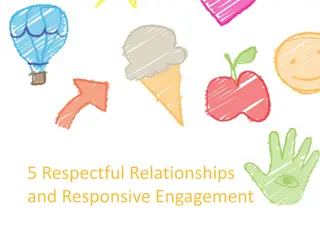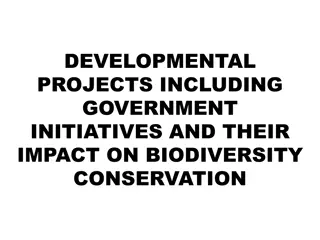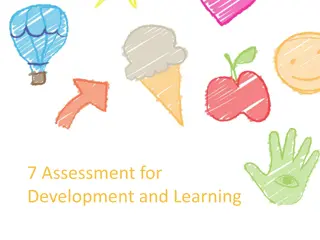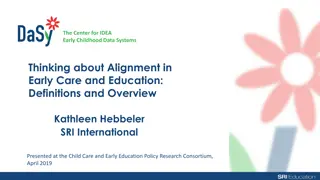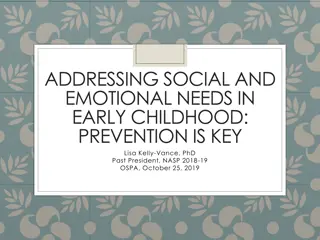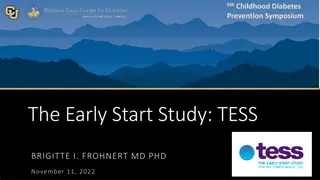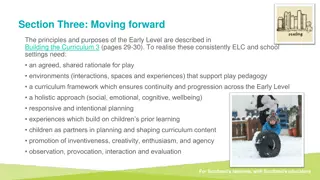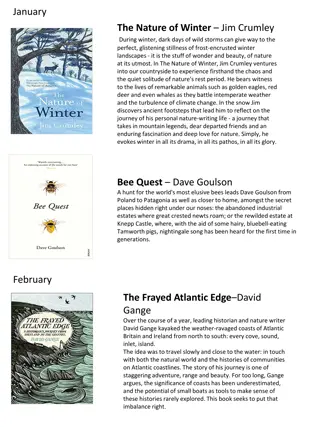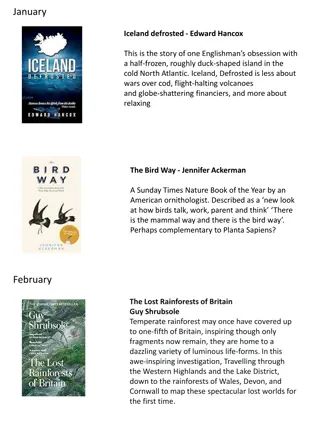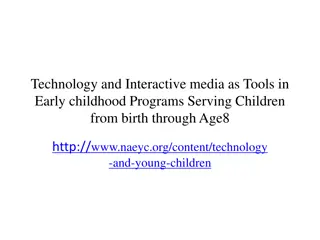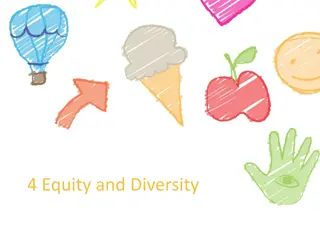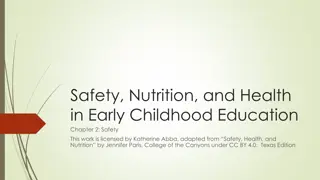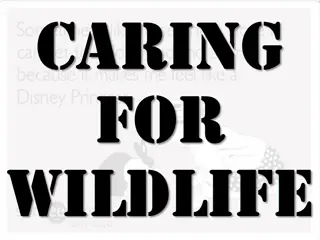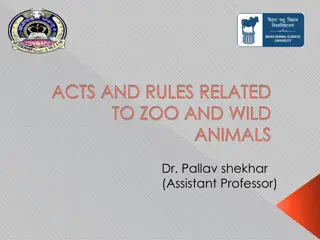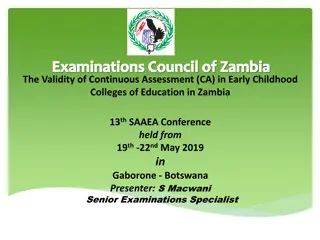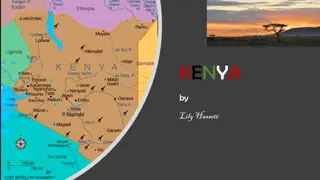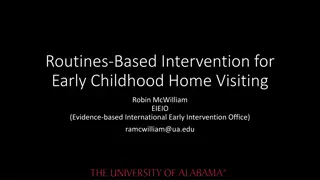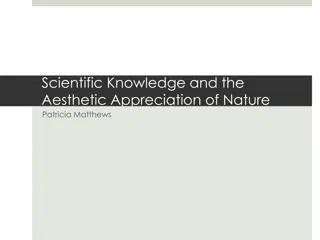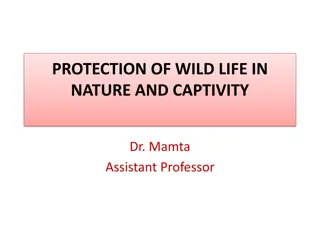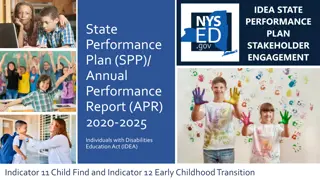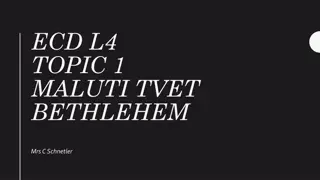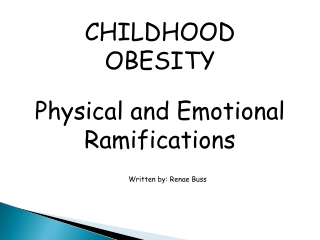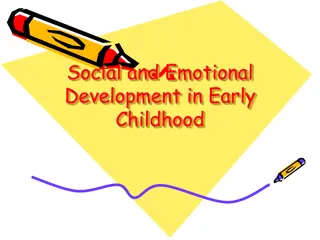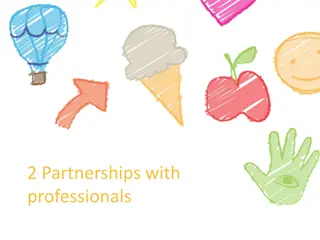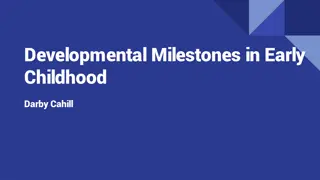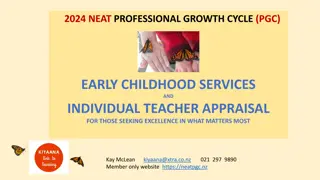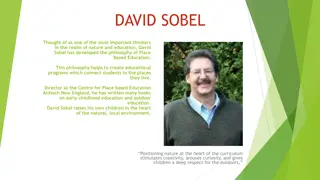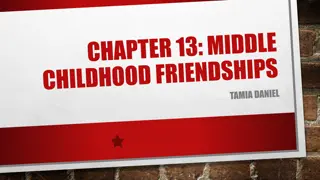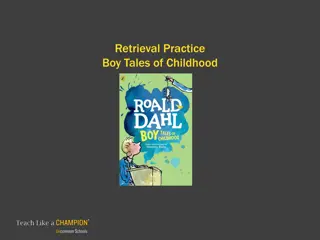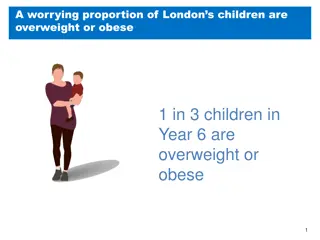Exploring Nature and Wildlife in Early Childhood Education
Delve into the world of woodland animals, seasonal changes, and healthy eating with engaging activities for young learners. From discovering why hedgehogs hibernate to creating imaginative stories about woodland creatures, children will explore nature up close. Interactive experiences like setting up a woodland animal sanctuary role-play and preparing farm-to-fork meals will captivate young minds and foster a love for the environment.
Download Presentation

Please find below an Image/Link to download the presentation.
The content on the website is provided AS IS for your information and personal use only. It may not be sold, licensed, or shared on other websites without obtaining consent from the author. Download presentation by click this link. If you encounter any issues during the download, it is possible that the publisher has removed the file from their server.
E N D
Presentation Transcript
Curriculum Overview 2020 - 2021 Religious Education Topic 1: Myself Topic 2: Welcome Topic 3: Birthday Topic 4: Celebrating Topic 5: Gathering Topic 6: Growing Topic 7: Good News Topic 8: Friends Topic 9: Our World Judaism Islam Designated Safeguarding Lead Mrs L Gamble Deputy Safeguarding Lead Mrs P Martin Reception: Mrs Martin Contact us office@olmcprimary.co.uk 01302 349743
Key texts: Gruffalo Julia Donaldson and Axel Scheffler Percy The Park Keeper Nick Butterworth Rationale: AUTUMN TERM IN RECEPTION Vocabulary: acorn autumn berry conker crunch feather harvest hedgehog hibernate leaf migrate nature nut pinecone season squirrel tree twig wild wind winter woodland Why do squirrels hide their nuts? Why do hedgehogs hibernate? Children will start off by looking at Autumn through song, rhymes and experiences. They will then go on to learning about owls and these facts real life. The will learn about other woodland animals in a real life context. We will then start looking at these animals in a fictional context in the Gruffalo story and Percy the Park Keeper. Explore these questions and more during this topic. Learn about the seasonal changes in the natural world during late autumn and winter. We will be looking at: Seasonal changes Hibernation and migration Woodland animals Seasonal celebrations and festivals By the end of the topic children will know about the changes that occur during Autumn. This will be able to articulate this and how this season progresses through to winter. They will know about different animals who live in woodlands including animals which hibernate and are nocturnal. They will be able to contrast and compare animals. Children will be able to look at how these animals have been used in a fictional setting and create their own stories. They will be able to articulate their learning, sharing things they have found out and answering simple questions. They will have developed their confidence to speak to groups and also settle into their new environment, building relationships with adults and other children. Role Play - Woodland Animal Sanctuary vets equipment, bandages, health centre Reading area Percy the Park Keeper wheelbarrow, tree stumps, gardening tools, watering can, animal masks Help your child prepare Woodlands are wonderful! Why not explore a local woodland together to build a fairy house using twigs, leaves, nuts and berries? You could also cook some fabulous autumnal recipes such as pumpkin soup or toffee apple cakes. Alternatively, set up a mud kitchen in your garden. What ingredients from the garden can you mix together to create an autumn potion?
Key texts: Vocabulary: bitter bread carrot cereal chop cook courgette dig eat exercise fish fruit grow healthy lettuce meat orange peel SPRING TERM IN RECEPTION Are carrots orange? Do cows drink milk? plants peas potato radish recipe radish salad salty seed sour spade spicy stir sweet tomato trowel vegetable The Hungry Caterpillar Eric Carle Oliver s Vegetables Vivian French The Bad Tempered Ladybird Eric CarleFarmer Duck Martin Waddell Rationale: Children will start off by sharing what they know about the theme. Two themes have been linked to allow the children to learn about food, growing and minibeasts, but also farming and animals on farms. Broadening their experiences. Children will have first hand experiences of farm to fork. Looking at where there food comes from and what it needs to grow. Using these to create their own farmers market selling food they have grown to their parents. What do we like to eat? Are we happy to try something new? Are there foods to match every colour in a rainbow? What do you like to eat? Explore questions and more in this project about staying healthy, eating well and trying something new. We will be looking at: food groups and healthy eating recipes and cooking the benefits of exercise origins of different foods Help your child prepare Farms are fantastic! Why not explore your kitchen cupboards together and talk about where different foods come from? Do you have any local farm produce? You could also visit a local farm or petting zoo and take pictures of each animal to share with the class. Alternatively, take toy tractors, spades and trowels outside to dig together in the mud. Add water to the soil for extra muddiness don t forget your wellies! By the end of the topic children will know what plants needs to grow and have grown them. They will know what foods are good for them and reasons why. They will have been given the opportunity to taste and try new foods giving their opinions. They will know about different farm animals and what they provide. They will have developed in confidence with their physical development to write more sustained pieces with their increasing phonic knowledge and stamina. Visit - Supermarket visit Shepherds place Farm visit Role Play - Healthy eating caf and farmers market Farm reading area with tractor and animals set Wooden farm small world set Growing foods in outdoor area Investigation area - live caterpillars
Key texts: Handa s Surprise The Lion Who Wanted to Love Giraffes Can t Dance African Adventures- DK Reads Mama Panya s Pancakes: A tale from a Kenyan Village Vocabulary: Africa camouflage cheetah claw colour dance elephant fur giraffe hyena Kenya lion Maasai meerkat monkey pattern SUMMER TERM IN RECEPTION prowl Safari Serengeti spot stripe Tanzania tribe wildlife wild zebra aeroplane ship train hot air balloon bus jeep Why do Zebras have stripes? Where do lions live? It s time to discover amazing Africa and the wild animals that live there. Rationale: Children will be referred back to what they learnt about animals and foods in this country. They have built a basis of information about this country and are building to learn about the wider world and a contrasting environment and culture. They will learn about the Maasai people and contrast their life to a life in England. This will extend to clothes and will look at how these are different and will lead on to the use of fabrics and art work. Throughout the project they will build up their knowledge of stories from different cultures, using these as a basis to create their own stories. Children will be encouraged to develop their own personal opinions about where they would like to live and why. They will build up knowledge of transport to take them to different places and why that is necessary. This term, we ll learn to dance, sing and play instruments. We ll learn where Africa is and what the landscapes, people and wildlife are like across this stunning continent. Who are the Maasai? What is camouflage? Where is the Serengeti? Let s find out! We ll learn about what school is like for African children, use our senses to explore a market stall of African foods. We ll use our imaginations to explore African animals, record animal noises and write our own call and response songs. Using sticks, we ll make African- themed marks in soggy soil, and create an African landscape using sand, rocks, gravel and driftwood. In mathematics, we ll count and estimate animal numbers and in literacy, use labels and captions to identify animal traits. Then we ll get creative, tapping out syllables on drums as we talk and trying our hand at African printing. Role play: Safari vehicle with binoculars, animal masks, hats Reading Area - African mud hut, instruments, African clothes, fly nets Yorkshire Wildlife Park Visit Help your child prepare Africa is awesome! Why not visit your local library together to find out more about this cool continent? You could also curl up on the sofa and watch The Lion King, Tarzan, Born Free or Madagascar. Alternatively, tear up coloured paper and work together to make a vibrant animal collage. Can you include a range of animal markings?
Outdoor Learning Young children need to be active to learn. Research shows that movement is significantly linked to learning. Our outdoor provision offers children unique opportunities for growing and learning. Outdoor learning gives children: space to learn through being physically active across all areas of the curriculum space to develop a range of physical skills and opportunities to experiment and refine these space to challenge themselves and take risks in a safe, secure environment space to work on a larger scale and in collaboration with others freedom to control their own learning, to make decisions and be creative the opportunity to experience a range of feelings, from excitement to being calm the chance to be outdoors daily, having hands on experiences in the changing seasons direct contact with birds, plants, mini-beasts and other natural materials Curriculum Project Coverage All our projects this year will cover the Foundation Stage Profile, embedding the following skills: Communication and Language Listening & Attention; Speaking; Understanding Physical Development Moving & Handling Personal, Social and Emotional Development Self-confidence & Self-awareness; Managing Feelings & Behaviour; Making relationships Literacy- Reading; Writing Understanding the world People & Communities; The World; Technology Expressive Arts & Design Exploring & Using Media/Materials, Being Imaginative
Mathematics Mastery Autumn Early mathematical experiences Classifying, matching, comparing and ordering. Pattern and early number Recognise, describe and copy patterns. Count one, two and three objects reliably. Numbers within 6 Represent, count and order. One more and one fewer. Addition and Subtraction within 6 Combination and partitioning. Explore and represent addition and subtraction. Explore the concept of zero. Measures: Length Estimate, compare and explore the weight, capacity, size and length of everyday objects. Use everyday language to talk about capacity, weight and size. Shape and Sorting Explore, describe and sort 3-D shapes. Use mathematical language to describe position. Calendar and Time Explore days of the weeks, seasons and time. Ordinal language when sequencing events. Measure short periods of time in simple ways. Mathematics Mastery Spring Numbers within 10 Count, represent, recognise and order. One more/greater and one fewer/less. Addition and Subtraction within 10 Augmentation and reduction. Practise addition and subtraction including using zero. Numbers within 15 Explore, represent, count and order. One more and one fewer. Grouping and Sharing Explore counting in equal groups and sharing into equal groups. Numbers within 20 Count, represent and order. One more/greater and one fewer/less. Investigate number combinations Ordinal numbers and consolidate patterns. Double and half Understand and apply the concept of double and half. Mathematics Mastery Summer Shape and Pattern Describe and sort shapes. Use shapes to recognise, continue and create pattern. Addition and Subtraction Applying the structures. Exploring commutativity. Comparing two amounts. Doubling and halving. Money Recognise coin values. Explore different combinations of coins. Change from ten pence. Measures Compare and describe capacities, volumes, weights and lengths. Depth of numbers within 20 Explore strategies and representations. Apply knowledge of all concepts in their surrounding environment. Recognise and extend a pattern. Numbers beyond 20 Recognise, compare and say numbers to 50 in order. One more and one less.




